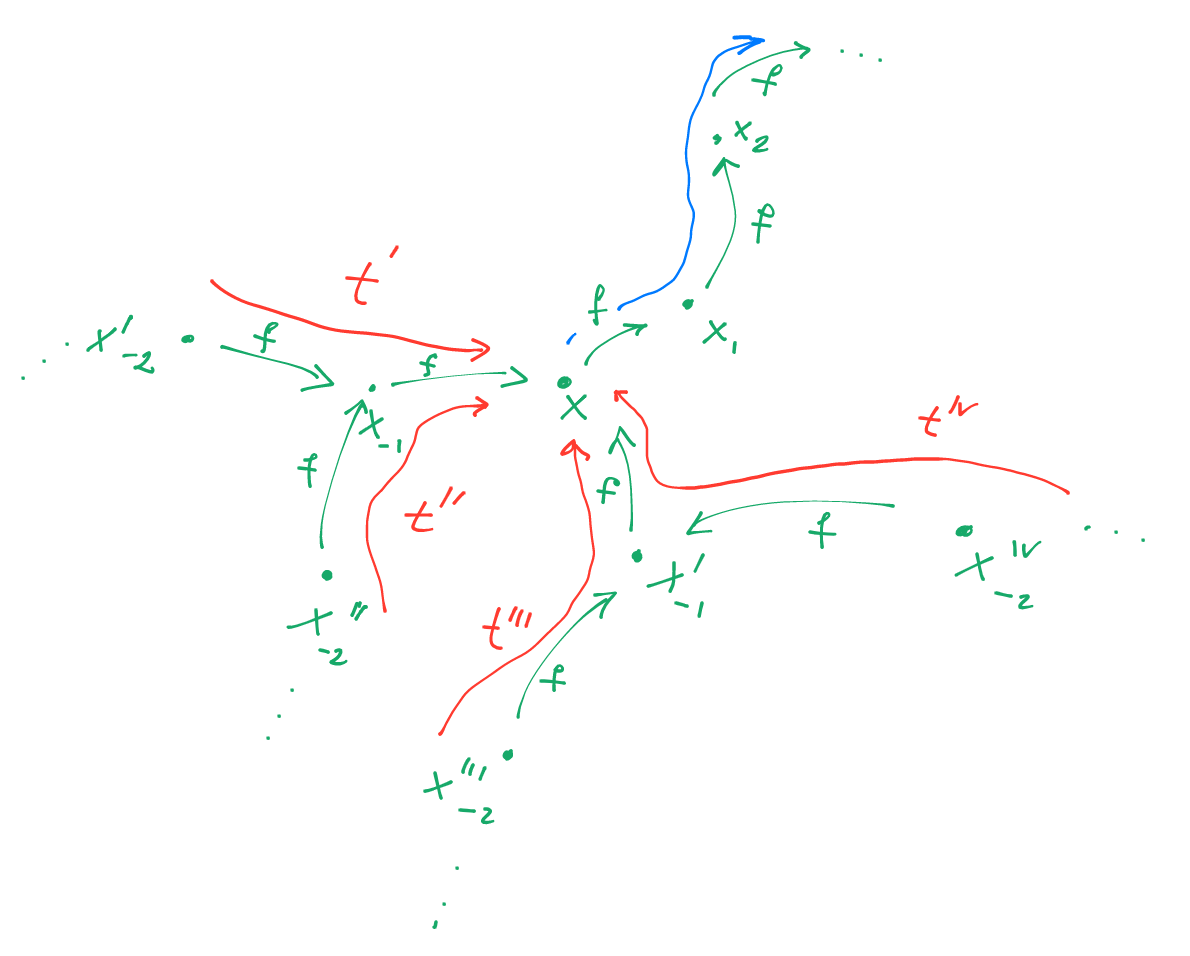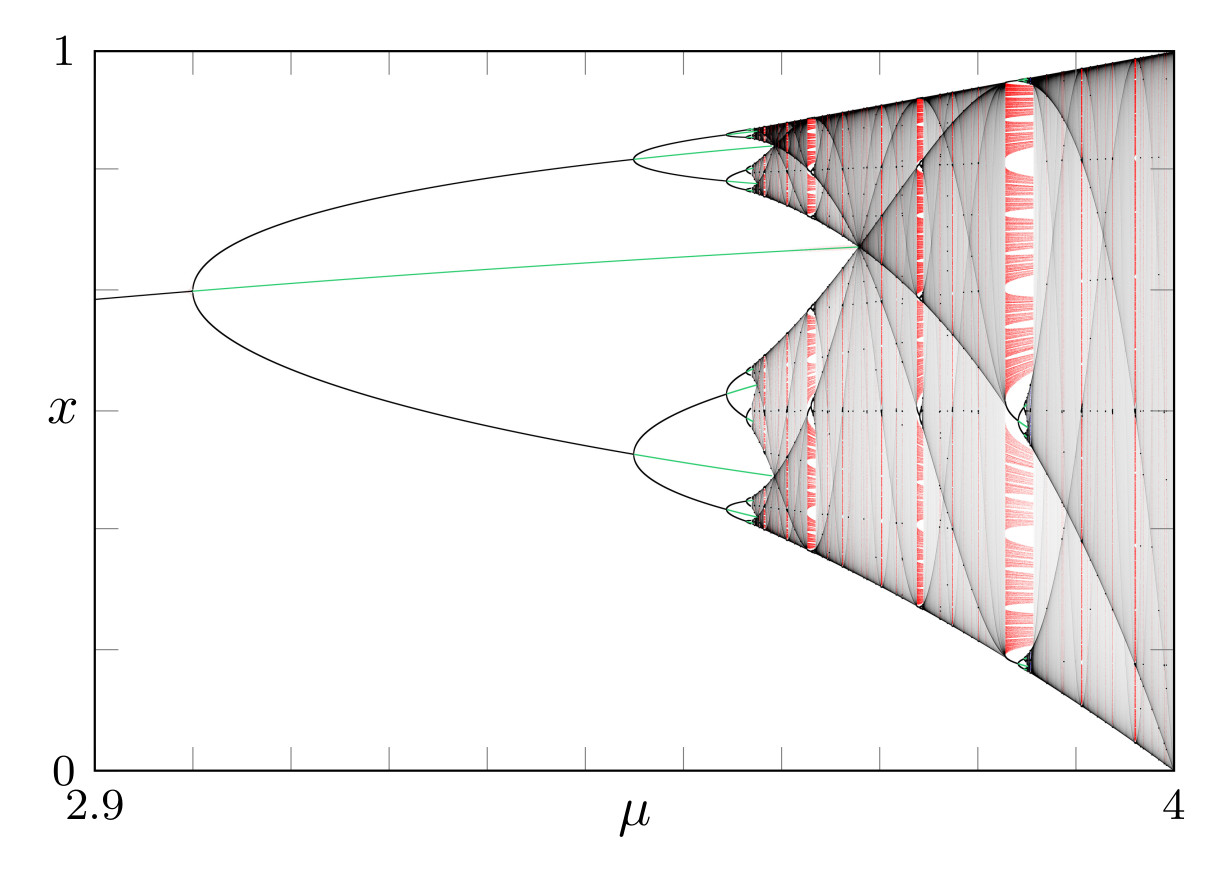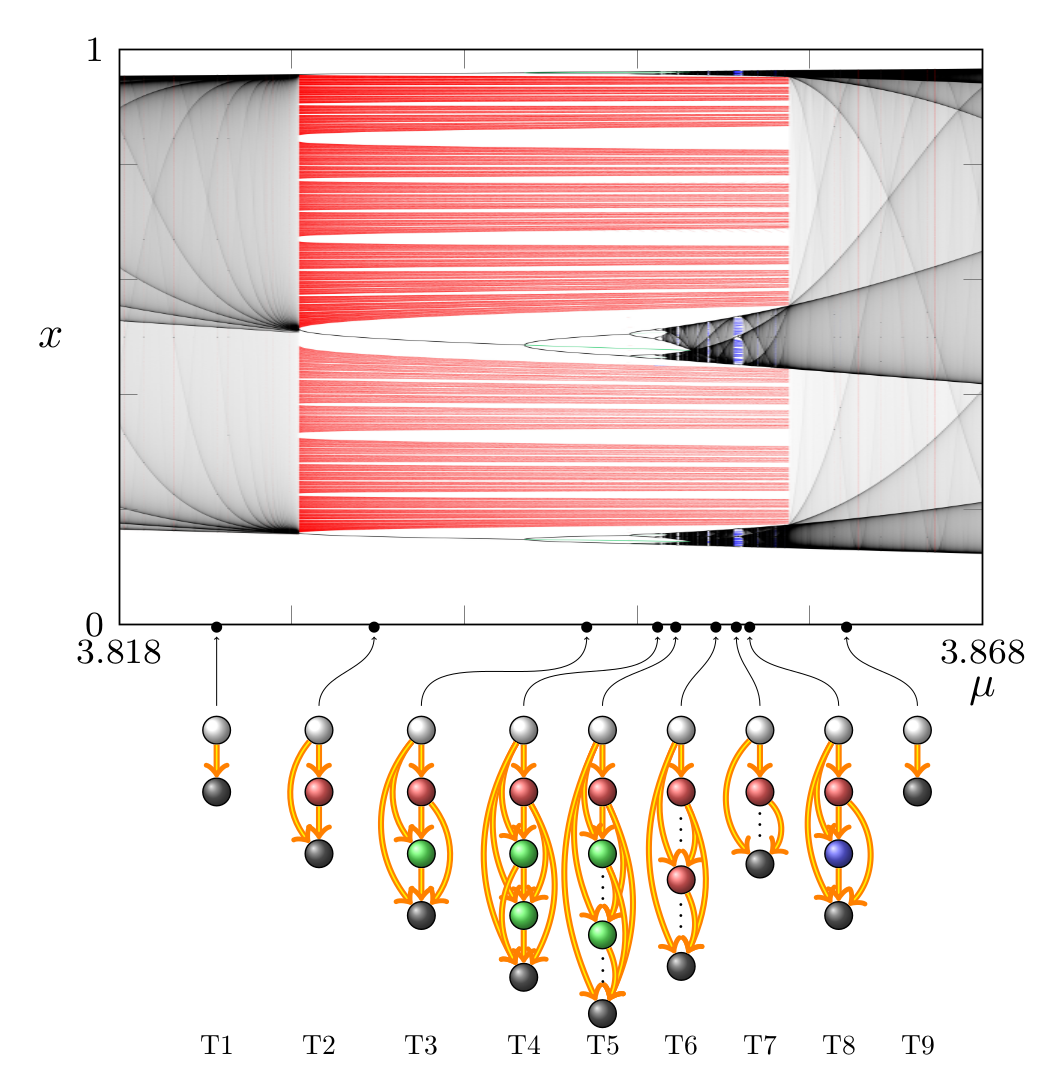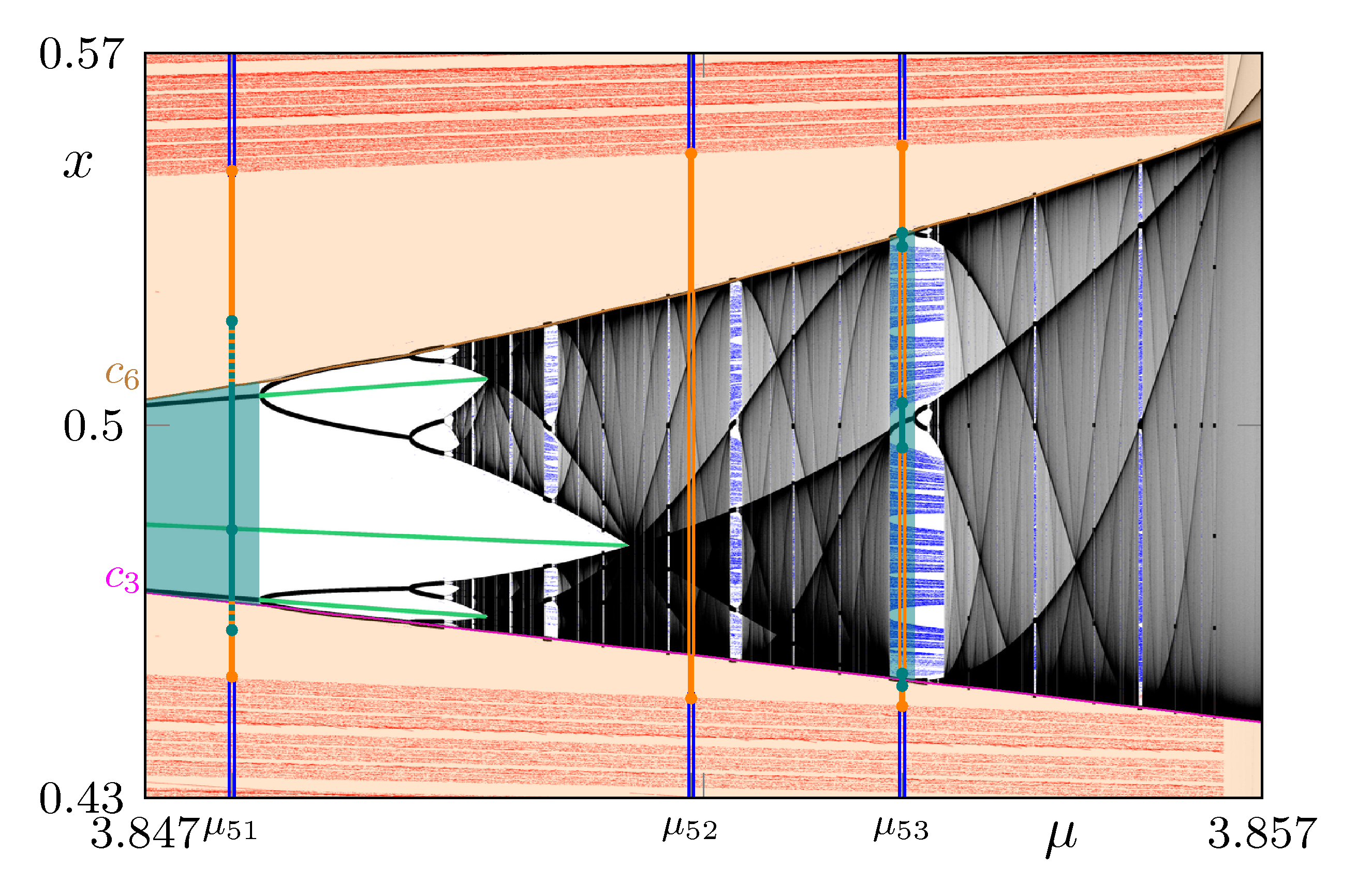Press ? for presentation controls.
Best viewed in Firefox,
Chrome and
Opera.
Backward dynamics
in S-unimodal maps
Roberto De Leo
<roberto.deleo@howard.edu>
Howard University
Washington, DC (USA)
Motivations
Inverse Limits
Given a map $p:M\to M$, $\alpha_p(x)$ is the set of all $y\in M$ s.t.
Theorem [Fatou 1920]


Numerically one gets similar results in case of real Newton maps
(see below Newton's map of $p(x,y)=(x(x^2-1)+60y,y(y^2-1)-x)$),
but in this caseonly holds for some non-empty, non-dense open set.


Main Question
about the inverse dynamics
in a discrete dynamical system?
The answer is strictly related to the
qualitative dynamics nearby invariant sets.
I will answer this question referring to the the logistic map
but all my arguments hold for any S-unimodal map.
A few Definitions
Def 1: Trajectories of a discrete DS
A discrete dynamical system on a topological space$x_0=x$ ;$x_{i+1}=f(x_i)$ for all$i\in\Bbb Z$ .

Def 2: $s\alpha$ and $\omega$ limits
Given a bitrajectory
we denote by
and by
Given a point
its
Def 3: Chain-recurrent points
For each bitraj.|
A point an $\varepsilon$-chain from |

|
Def 4: Attracting and repelling Nodes
A main feature ofnamely a closed invariant set $A\subset M$ such that
Graph
of the
logistic map
The logistic map

|
|
Bifurcation diagram of the logistic map
There are 5 types of attracting nodes:
- Periodic orbit
- Feigenbaum attractor
- Cycle of intervals (chaotic)
- Beginning of a window
- End of a window

L. Jonker
D. Rand
S. van Strien
J. Guckenheimer
M. Lyubich
A. Blokh
+
C. Conley
Bifurcation diagram of the logistic map
There are 2 types of repelling nodes:
Periodic orbit Cantor set
(subshift of finite type)

L. Jonker
D. Rand
S. van Strien
J. Guckenheimer
M. Lyubich
A. Blokh
+
C. Conley
The period-3 window of the logistic map

Each discrete dynamical system $f:X\to X$ on a compact metric space $X$
has a Lyapunov function.
or
1. The nodes of $\Gamma_f$ are the equivalence classes of $\cal R_f$.
2. There is an edge
from node $M$ to node $N$
if there is a bitrajectory $t$
s.t. $\omega_f(t)\subset N$ and $\alpha_f(t)\subset M$.
The period-3 window of the logistic map

The graph of the logistic map is a tower,
namely there is an edge
between each pair of nodes.
Since $\Gamma_f$ has no loops, this means that nodes can be sorted linearly: $N_0,N_1,\dots,N_{p-1},N_p$.
Arbitrarily close to $N_i$,
for each $j\geq i$ there are points asymptoting to $N_j$.
No point close enough to $N_i$
can asymptote to $N_j$ for $j>i$.
Inverse Limits
Roughly speaking,
The extreme cases are:
1.
2.
3.
is the whole non-wandering set $\Omega_{\ell_\mu}$
Example 1

Example 1

Example 2

Example 2

Example 3

Fractals, 27:6, 2019. RdL, Julia sets of Newton maps of real quadratic polynomial maps on the plane, IJBC, 30:9 (2020). Jim Yorke, RdL, The graph of the logistic map is a tower,
Discrete & Continuous Dynamical Systems, 41:11 (2021) Jim Yorke, RdL, Infinite towers in the graphs of many dynamical systems,
Nonlinear Dynamics, 105 (2021) RdL, Backward asymptotics in S-unimodal maps, IJBC, 32:6 (2022)